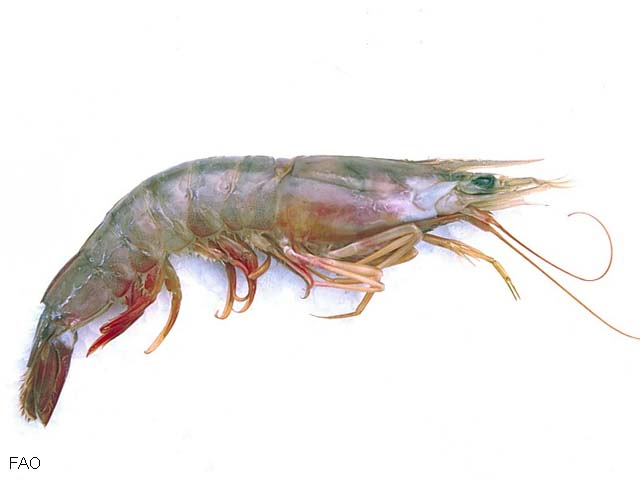| Penaeidae (penaeid shrimps) |
| 15.4 cm BL (male/unsexed); 18.9 cm BL (female); max.weight: 18.0 g |
|
benthic; brackish; marine; depth range 8 - 95 m |
| Indo-West Pacific. |
|
|
| Maximum carapace length: 3.5 cm (male); 4.2 cm (female) (Ref. 8). Common body length: 7.0 to 14.0 cm (Ref. 409). Minimum depth range from Ref. 111048. Subtidal (Ref. 106854). Found mainly in turbid waters down to a depth of 95 m over bottoms of mud, sandy-mud or silt. Juveniles are found in estuaries and backwaters, also in seagrass beds, mangrove banks, mud flats, and open channels (Ref. 8) while adults are found in deeper waters (Ref. 10). Juveniles from a riverine mangrove are likely to obtain nutrition from phytoplankton and possibly epiphytic algae than from mangrove leaves or detritus (Ref. 105141). Omnivore (Ref. 116259). |
|
Not Evaluated (N.E.) Ref. 123251)
|
|
|
Source and more info: www.sealifebase.org. For personal, classroom, and other internal use only. Not for publication.

